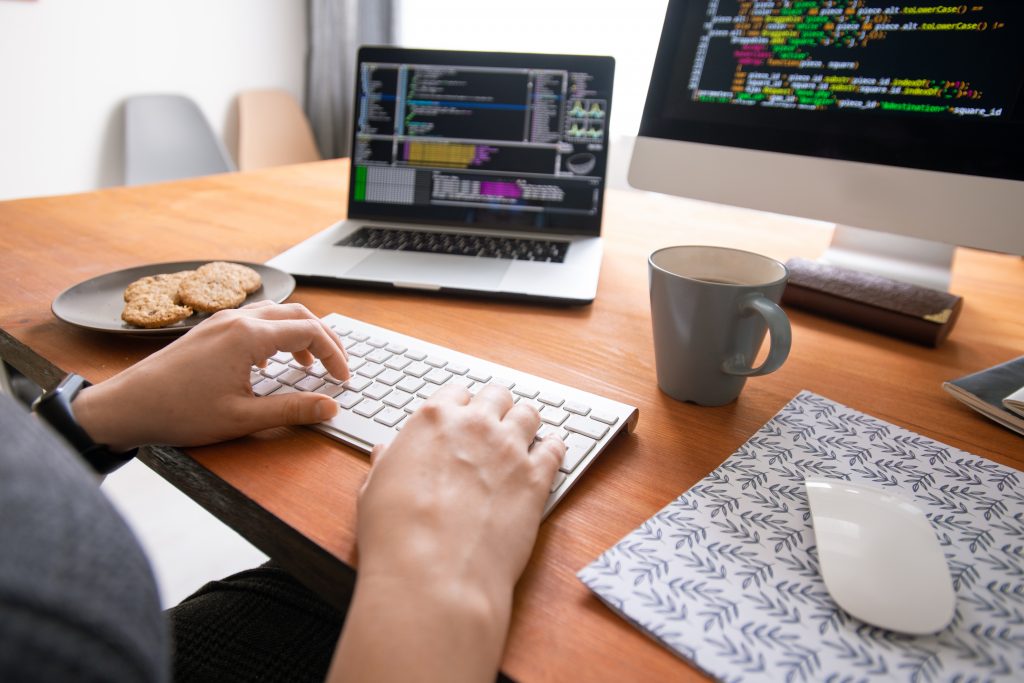
Written by Dr. Hannes Nel
Hello, I am Hannes Nel and I discuss comparative and content analysis in this article.
Although quite simple, comparative and content analysis are most valuable for your research towards a master’s degree or a Ph. D.
It does not matter what the topic of your research is – you will compare concepts, events or phenomena and you will study the content of existing data sources.
What you need to know, is how to analyse and use such data.
Comparative analysis
Comparative analysis is a means of analysing the causal contribution of different conditions to an outcome of interest. It is especially suitable for analysing situations of causal complexity, that is, situations in which an outcome may result from several different combinations of causal conditions. The diversity, variety and extent of an analysis can be increased, and the significance potential of empirical data can be improved through comparative analysis. The human element plays an important role in comparative research because it is often human activities and manifestations that are compared.
Although theoretical abstractions from reality can be and, in some instances are the only way in which to do valid comparison, the units of analysis can also be whole societies or systems within societies. Comparative research does not simply mean comparing different societies or the same society over time – it might involve searching systematically for similarities and differences between the cases under consideration.
Comparative researchers usually base their research on secondary sources, such as policy papers, historical documents or official statistics, but some degree of interviewing and observation could also be involved. A measure of verification is achieved by consulting more than one source on a particular issue.
Qualitative research approaches are most suitable for the conduct of comparative analysis, with the result that many paradigmatic approaches can be used. Examples include behaviourism, critical race theory, critical theory, ethnomethodology, feminism, hermeneutics and many more.
Content analysis
Content analysis is a systematic approach to qualitative data analysis, making it suitable to serve as the foundation of qualitative research software. It is an objective and systematic way in which to identify and summarise message content. The term ‘content analysis’ refers to the analysis of such things as books, brochures, written or typed documents, transcripts, news reports, visual media as well as the analysis of narratives such as diaries or journals. Although mostly associated with qualitative research approaches, statistical and other numerical data can also be analysed, making content analysis suitable for quantitative research as well. Sampling and coding are ubiquitous elements of content analysis.
The most obvious example of content analysis is the literature study that any researcher needs to do when preparing a research proposal as well as when conducting the actual research for a doctoral or master’s degree.
Especially (but not only) inexperienced students often think that volume is equal to quality, with the result that they include any content in their thesis or dissertations without even asking themselves if it is relevant to the research that they are doing. The information that you include in your thesis or dissertation must be relevant and it must add value to your thesis or dissertation.
We analyse the characteristics of language as communication regarding its content. This means examining words or phrases within a wide range of texts, including books, book chapters, essays, interviews and speeches as well as informal conversation and headlines. By examining the presence or repetition of certain words and phrases in these texts you are able to make inferences about the philosophical assumptions of a writer, a written piece, the audience for which a piece is written, and even the culture and time in which the text is embedded. Due to this wide array of applications, content analysis is used in literature and rhetoric, marketing psychology and cognitive science, etc.
The purpose of content analysis is to identify patterns, themes, biases and meanings. Classical content analysis will look at patterns in terms used, ideas expressed, associations among ideas, justifications, and explanations. It is a process of looking at data from different angles with a view to identifying key arguments, principles or facts in the text that will help us to understand and interpret the raw data. It is an inductive and iterative process where we look for similarities and differences in text that would corroborate or disprove theory or a hypothesis. A typical content analysis would be to evaluate the contents of a newly written academic book to see if it is on a suitable level and aligned with the learning outcomes of a curriculum.
Content analysis can also be used to analyse ethnographic data. Ethnographic data can be used to prove or disprove a hypothesis. However, in this case validity might be suspect, primarily because a hypothesis should be proven or rejected on account of valid evidence. Quantitative analysis is often regarded as more “scientific” and therefore more accurate than qualitative data. This, however, is a perception that only holds true if the quantitative data can be shown to be objective, accurate and authentic. Qualitative data that is sufficiently corroborated is often more valid and accurate than quantitative data based on inaccurate or manipulated statistics.
Content analysis would typically comprise of three stages: stating the research problem, collecting and retrieving the text and employing sampling methods, interpretation and analysis. Stating the problem will typically be done early in the thesis or dissertation. Collecting and retrieving text and employing sampling methods are typically the actual research process, which may include interviewing, literature study, etc.
It is a good idea to code your work as you write. Find one or more key words for every section and keep record of it. In this manner you will be able to find arguments that belong together more easily, and you will be able to avoid duplication of the same content at different places in your thesis or dissertation. Most dedicated computer software enables you to not only keep content with the same code together, but also to access and even print it. This is especially valuable for structuring the contents of your thesis or dissertation in a logical narrative format and to come to conclusions without contradicting yourself.
Content analysis sometimes incorporates a quantitative element. It is based on examining data for recurrent instances, i.e. patterns, of some kind. These instances are then systematically identified across the data set and grouped together. You should first decide on the unit of analysis: this could be the whole group, the group dynamics, the individual participants, or the participant’s utterances. The unit of analysis provides the basis for developing a coding system, and the codes are then applied systematically across a transcript. Once the data have been coded, a further issue is whether to quantify them via counting instances. Counting is an effective way in which to provide a summary or overview of the data set as a whole.
Interviewing is mostly used prior to doing content analysis, although literature study can also be used. Analysing data obtained through interviewing includes analysing data obtained from a focus group. This variation of content analysis usually begins by examining the text of similarly used words, themes, or answers to questions. Analysed data need to be arranged to fit the purpose of the research. This can, for example, be achieved by indexing data under certain topics or subjects or by using dedicated research software. In addition to individual ideas, the flow of ideas throughout the group should also be examined. It is, for example, important to determine which ideas enjoy the most support and agreement.
Paradigmatic approaches that fit well with content analysis include feminism, hermeneutics, interpretivism, modernism, post-colonialism and rationalism.
Summary
Comparative analysis:
- Analyses the conditions that lead to an outcome.
- Involves searching systematically for similarities and differences.
- Mostly uses secondary data sources.
- Is mostly used with qualitative research.
Theoretical abstracts can be used for comparative analysis.
Comparative analysis is used:
1. To increase the diversity, variety and extent of an analysis.
2. To analyse human activities.
3. To analyse whole societies and systems within societies.
Content analysis:
- Can serve as the foundation for qualitative research.
- Can be used with qualitative and quantitative research.
- Extensively uses literature as data.
- Can also be used to analyse ethnographic data.
The purpose of content analysis is to identify patterns, themes, biases and meanings.
It would typically comprise of three stages: stating the research problem, collecting data, and analysing data.
Coding can be used with good effect in content analysis.
Close
You probably already noticed that the differences between different data analysis methods are just a matter of emphasis.
They share many elements.
For example, both comparative analysis and content analysis use literature as sources of data.
Both fit in better with qualitative research than with quantitative research.
This means that you can use more than one data analysis method to achieve the purpose of your research.
Enjoy your studies.
Thank you.









